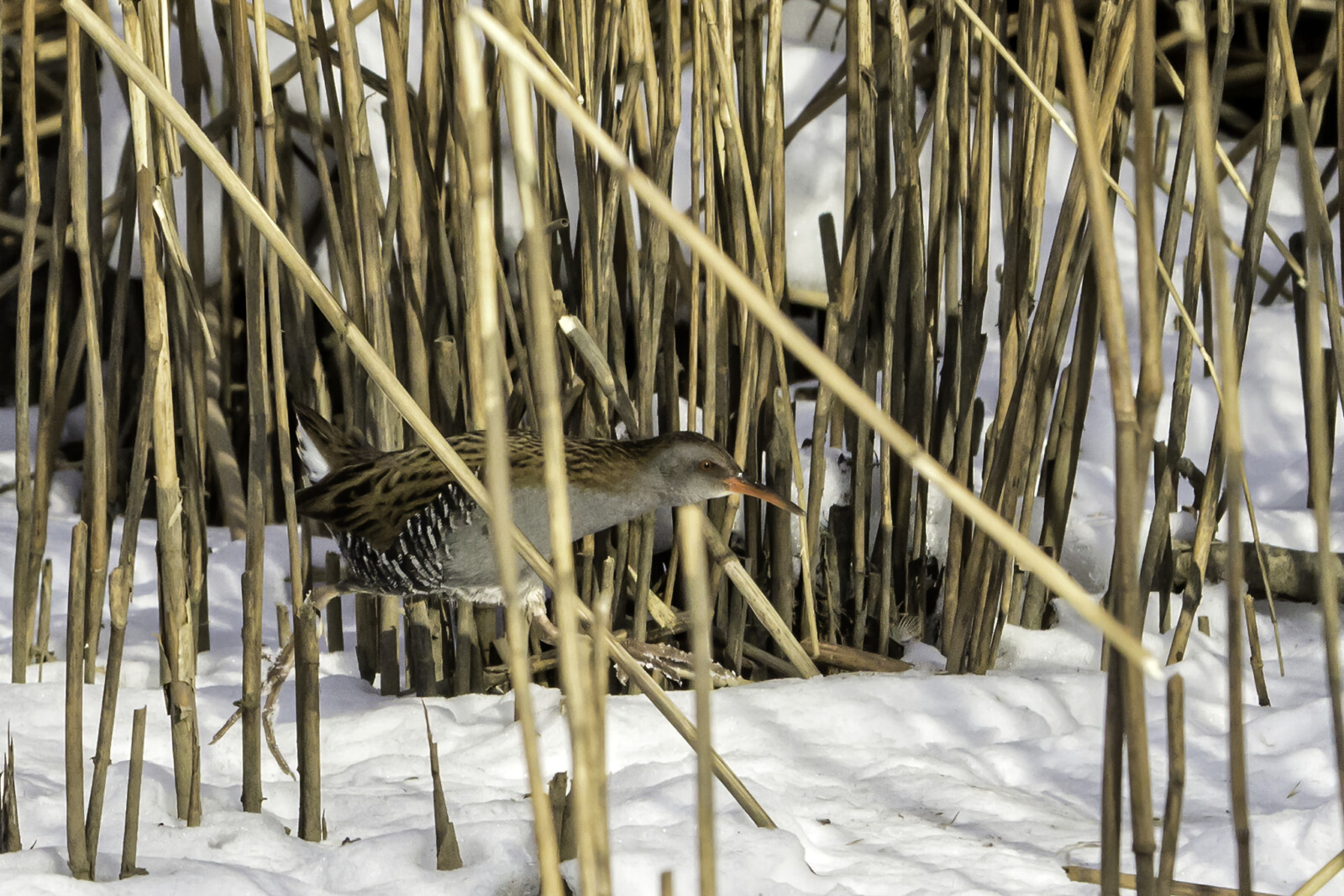Water rail
- Water rail
- https://linnuriik.ee/wp-content/uploads/2021/09/Rooruik-f.Janne-Polluaas-1024x683.jpg
- Keemu linnud
- https://linnuriik.ee/wp-content/uploads/2021/09/rooruik_salvestusVRunnel.mp3
Water rail. Photo: Janne Põlluaas
Tutvustus
Latin Rallus aquaticus (L.)
Estonian Rooruik
Also known as: no other known names
Status in Estonia
Breeding, migratory and wintering bird.
Description
The rounded back body gives the bird an almost pear-shaped appearance. The chest is flat while the neck is long and the beak is lengthy, slender and slightly bent. It has dark plumage; the under-tail coverts are lighter. The top side is olive brown with black flecks, the ‘face’ and breast are dark bluish grey, while the sides and stomach have black and white stripes. The beak is red, with a dark back and tip; the legs are dull red.
Size
Body length 23–26 cm (incl. beak 3–4.5 cm), wingspan 38–45 cm, body mass 75–190 g.
Similar species
Spotted crake, little crake, corn crake, common moorhen.
Distribution
The nominate species of water rail is found throughout Europe, North Africa and Asia up to the upper reaches of the Ob River. A separate subspecies lives in Iceland and two subspecies in Asia. It is common in Estonia depending on the availability of suitable breeding sites.
Population
Estonia has 800–1500 breeding pairs.
Occurrence in Estonia
Although mostly a migratory bird, a limited number (10–50) might be seen in winter. It arrives in Estonia from late March to late April, departing in October.
Diet
It feeds mainly on invertebrates: aquatic insects, their larvae, molluscs and spiders. It gets food from the bottom of a body of water or from plants growing in it.
Habitat
It nests in the reed and cattail beds of sea bays and lakes as well as in other boggy bodies of water with tall vegetation.
Nesting
The nest is located in dense vegetation and is made of dry straw. The nest contains 6–11 eggs that are incubated by both adult birds over a period of 19–22 days. Chicks are nidifugous.
Conservation status and protection
It belongs to the protected bird species of category III. The destruction of suitable nesting grounds is the biggest threat.
Distribution and population in Lääne County
The water rail is a common breeding bird in Lääne County and an uncommon winterer. The water rail is a secretive reed bird that is difficult to see, but its voice can be heard in many places across Lääne County. Water rails can be heard in Matsalu from various observation towers, including Rannajõe and Penijõe. The greatest place to enjoy the water rail concert is from the bird towers of the Sutlepa Sea near Noarootsi.
During the winter months, water rails are often observed around the Haapsalu water treatment plant.
